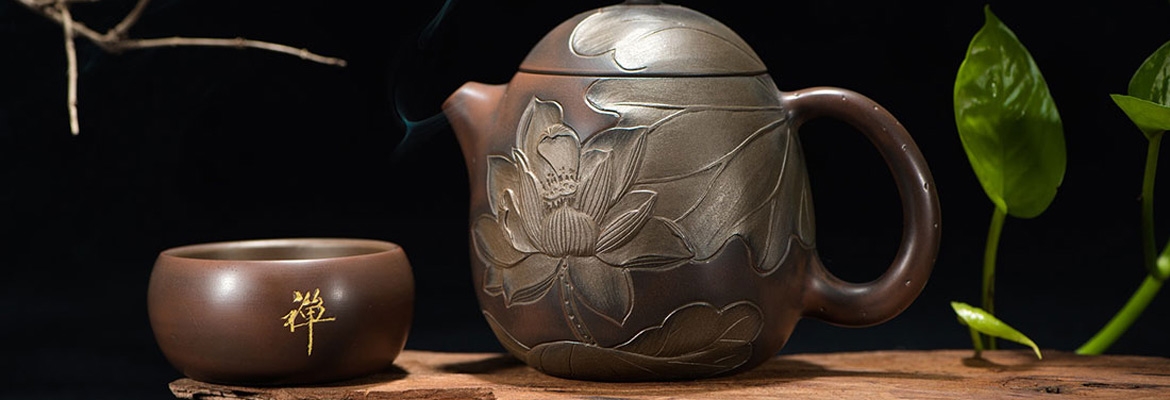
“If you are cold, tea will warm you;
If you are too heated, it will cool you;
If you are depressed, it will cheer you;
If you are excited, it will calm you.”
— William Ewart Gladstone, British Prime Minister (1809-1898)
A cup of well-brewed tea, whether it be green, black, or red is a guilty pleasure made of lots of pleasure and very little guilt. The steam wafting from a hot cup, the uplifting aroma and the unhurried sipping of the warm brew provide a welcome slowing down from the rush of life. Unlike coffee, tea is the drink of contemplation and relaxation.
The word tea refers to the infusion or decoction made from the leaves of Camellia sinensis.All tea comes from this one plant but is classified as either white, yellow, green, black, red or oolong based on the harvesting and processing technique. While herbal infusions such as rooibos and camomile are called tea, these infusions are not technically tea. This plant is native to Myanmar, Yunan and Sichuan provinces of China.
The accidental birth of tea
It is then hardly surprising that tea originated from China. Chinese legends state that the tea was accidentally invented 4753 years ago by Emperor Shennong, widely considered to be the ancestor of the Han Dynasty in China. A skilled herbalist and scientist, he (or more likely, his servant!) was boiling water in the garden when a stray leaf from a nearby wild plant drifted into the pot. The resulting infusion was delicious and refreshing, prompting the curious Emperor to find out more about this plant and discovering its medicinal properties.
It is believed that tea drinking might have taken off 1000 years later during Shang dynasty, where it was drunk as a medicinal tonic first before it was being enjoyed for leisure. By the 7th century, tea was firmly established as China’s national drink and it received its own full length book, Cha Ching (The classic of Tea). However, it was only in 2016, where tea was buried in the mausoleum of the Han Emperor Jing Di, that we have factual evidence proving that tea is likely to have been drunk as early as the 2nd century.
Tea in Buddhism

The association of tea with relaxation is no accident. Closely intertwined with Buddhism, especially Zen buddhism, tea is often seen as an aid to meditation, stemming hunger, clearing the mind and sharpening resolve. Japanese culture credits Bodhidharma, the Indian saint and founder of Zen Buddhism, for this development. Introduced to tea in China, Bodhidharma incorporated the drinking of tea into his daily meditation routine. Yet the story of tea in Zen buddhism is unexpectedly glory! In popular legend, it is said that once Bodhidharma, during a long bout of meditation, realised with a start that he had dozed off. Disgusted with himself, he tore at his eyes, ripping out his eyelids, which fell to the ground. As the lids lay in the dirt, tea plants miraculously sprung up from them. Bodhidharma, from force of habit, chewed a few leaves, which cleared his mind. Once again focused, he resumed his meditation. Since then, tea has enjoyed an elevated status in Japan. Similar to the Chinese, the Japanese also developed elaborate tea rituals and ceremonies, reinforcing tea as a central cultural icon. It is believed that these ceremonies are likely to have originated from the Cha Ching.
Brewing Politics and Tea
Thankfully the spread of tea to other parts was more humane, though still quite dramatic. Being the almost sole producer of tea, China often gifted these leaves to the other countries and monarchs as diplomatic gifts. Russia’s tea drinking culture has its origins in a gift to the Tsar by the Chinese Emperor in the 17th Century. With the rise of the trade relations with China, samples were also brought back to Europe, mostly by the Dutch and the Portuguese, but the impact of this was fairly limited until two incidents in British history coincided.
It was the marriage of the Portuguese Princess Catherine to the British King Charles II that really set off the tea obsession. While tea existed in Britain as a “the China drink”, it was by no means popular until Catherine’s arrival. Tea was a favourite of the Portuguese royalty and, was part of her bridal gifts. She popularised tea in the court and it was seen as a drink of the wealthy.
When Charles married Catherine, the country was severely in debt and he was in urgent need of funds. While marrying her provided some financial relief, he still needed more funds. Unsurprisingly, he viewed the British commercial company, the East India Company (EIC) as an extension of Britain and gave them full military support, even gifting them the Indian port city of Mumbai, which was part of Catherine’s bridal gifts. This led to greater imports of tea into Britain, but it continued to be a drink of the rich – tea was such a prized commodity that the lady of the house kept in under lock and key.
It was also heavily taxed well into the 18th century; the first ever tax was crippling, essentially one quarter of the sale price was for taxes. Inevitably, such high demand combined with heavy taxation created a huge black market as crime networks smuggled tea or worse, adulterated tea with other leaves, and adding poisonous copper carbonate to give the appearance of tea. By the late 18th century, the ill effects of tea were more disastrous than the need for money. Taxes were slashed, making tea affordable and drying up the black market.
During this time, the EIC was also increasingly dissatisfied with China’s monopoly over the global tea market. It was decided that India, which was the centre of EIC operations, would start cultivating tea. Tea seeds were brought to Darjeeling and experimental plantation began. A highly covert operation was also led to bring the tea plant back to Britain. These plants were introduced near the Himalayas, but did not take root. Fortunately, tea plants native to Assam were discovered and were cultivated instead, creating the world’s first modern tea industry.
Global Impact of Tea
However, by the time the tea industry was created, three major wars were already fought because of tea. The high demand for tea was causing Britain’s trade deficit. This unsurprisingly led to the two “Opium wars” where Britain, amongst other causes, was fighting towards tax exemptions and the opening up of China for trade. Less expected was how tea was one of the root causes for the American Revolution. Sarcastically known as the “Boston Tea Party”, colonists returned tea or left it to rot at the docks as a sign of protest against the Tea Act of 1773, which imposed massive taxes for the import of tea into the colonies.
Despite all this historical drama, China is the world’s largest exporter of tea, followed by India today. Interestingly, China nor India are the world’s largest consumer of tea. Surprisingly, Turkey, is the world’s biggest consumer of tea even though they only jumped on the tea bandwagon after World War 1, when coffee became difficult to obtain and tea became the preferred drink.
Looking at a pot of green tea, one would hardly have expected such a riotous and colourful history from this soothing brew. The next time you look for some relaxation, pause and take in the soothing 4000 years of historical drama peppered with the occasional violence that is a lovely warm cup of tea!

